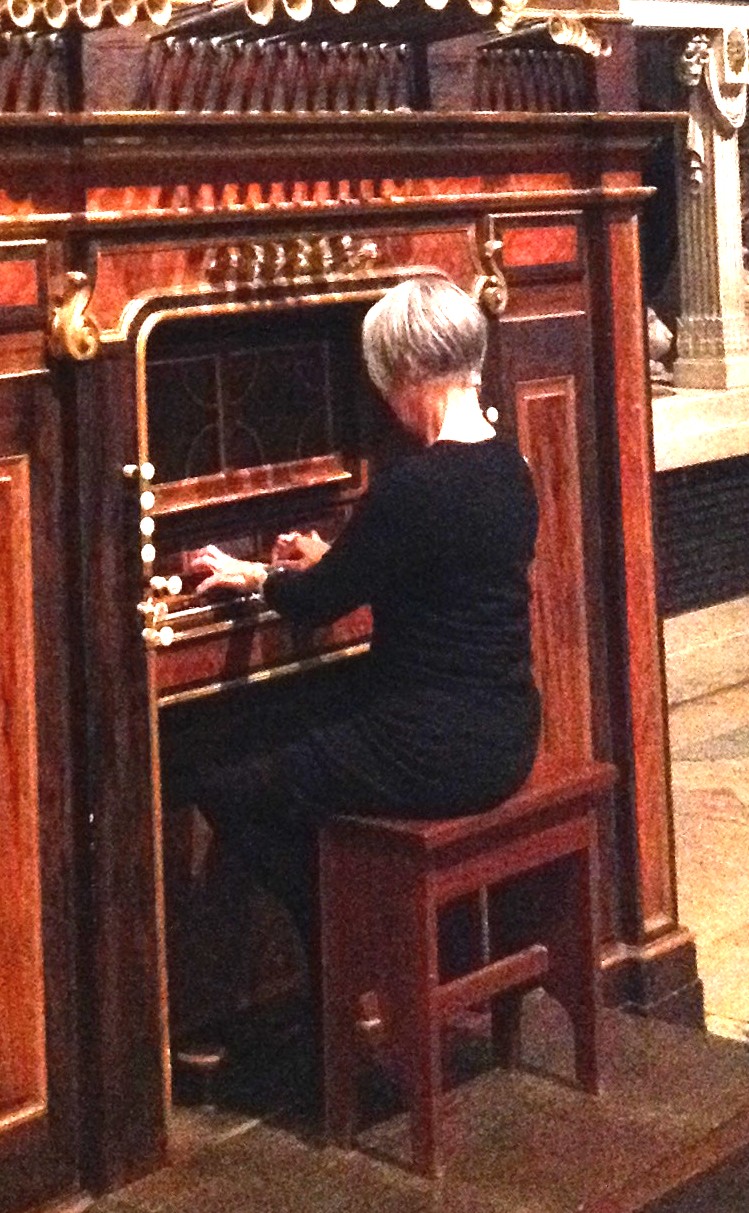Stumbling and muddling
When revising repertoire half learned and abandoned years ago ( ie given it up as a bad job), I confess to being quite horrified to realise just how inefficient my approach to thoroughly learning glorious music truly was. There were bits that I would crash through because they were easy, and significant other bits that would never go right, no matter how many times I tried to play and practise them, including slow motion work.
How and why did this happen? In earlier years, although I had piano lessons, I was not really made to practise technique, including scales and arpeggios, or Hanon studies, not even at music college level, as I was not a first study pianist. Those who achieve Grade 8 Piano and Organ nowadays will have had a good training to reach this level, whereas I had not, at that time, even heard of the Associated Board of the Royal Schools of Music, as it is now called. Yet, by constantly bashing on and on, I learned enough to get by, and there came a point where it was impossible to go any further. At that stage, I began to raise our family, and until the boys were pretty well ready to leave home, I did no quality playing at all. Progress has been made in the last few years because the opportunity, through retirement, has allowed enough time at home working on an electronic organ to begin the process of working out how to achieve what I set out to do in 1970 when I left school.
Being called upon to teach piano has meant learning the scales and arpeggios that were introduced in the very late 1950’s and early 1960’s. My son’s piano teacher introduced him to Hanon studies, and I had a go at them too. They teach finger control, and it is possible to vary the patterns and exercises by playing them in different rhythms, or staccato instead of legato. One also learns concentration and acquires stamina, in order to get to the end unscathed. Training to be a classical concert artist requires the same mental discipline and physical energy as that of top athletes.
Most players wish to play for enjoyment, but sometimes, that can mean not playing to the best of one’s ability.
Working out suitable fingering properly is time consuming, sometimes frustrating, but necessary. Also necessary is practising with separate hands, then with two hands, then with pedals, especially left hand and pedal. It is perfectly possible for more than one fingering strategy to work. The test of the best fingering is when you put both hands together. Often at this point fingering worked out seems to go completely off piste, it is as if fingers have minds of their own. They will wander off course, unless they are consciously controlled. Fingers will do their own thing unless what has been worked out, is firmly adhered to, possibly including being modified to accommodate how two hands function best together. That is an act of will.
In general, fingering patterns work best when they bear some relationship to learned scales and arpeggios. Most readers will know that 3rd and 5th fingers work well together, as do 2nd and 4th fingers, and 1st and 3rd. In working fingering out, it will work best if you work out where the individual phrases or patterns start and stop., ie, know where you are going! Most will require thumbs to go under, or other fingers to go over ( often 3rd and 4th), other situations require other solutions. I frequently see students happily using thumbs on black keys where another finger is much more secure in the long run. Once the fingering has been worked out, it is a good idea to connect actively a finger or thumb to a toe or heel in a strategic place and note how it feels. It is a point to focus on whilst learning. Thinking from the pedal up will help the bass line to sound promptly rather than drag.
So much popular and successful organ music is based on imitation of other instruments. Much Bach and Buxtehude, for example, is based on string writing; 19th century music organ music by Franck, Mendelssohn, Brahms, Reger requires a good piano technique. Much early keyboard music has the voice as its inspiration. Hence, what is written may not lie under the hand, so readily achieving easy fingering, including perfect legato for some styles, sometimes requires some finger substitution. That is ok, so long as it is planned.
Apart from my work on Buxtehude, most of whose works are new to me, I have returned to Dupré’s arrangement of the Sinfonia to Bach’s 29th Cantata. So much of it looks easy, repeated quaver pedal notes, three note left hand crotchet chords, right hand semiquaver broken chords and scalic work. Other passages seem to defy any amount of concentration to get right. Such passages consist of arpeggiated chord shapes for pedals, combined with three part rising left hand F# major chords and a right hand part that twists and turns in awkward ways. It is also relentless, never stopping until the end. The right hand part is a busy violin part, the pedal, a cello/ bassoon/ double bass part. Dupré’s fingering is sensible so long as it is followed scrupulously and practised slowly. After a weekend of plodding mechanically through notes, rhythms, hand positions, foot positions, etc etc, it was finally tamed. A wonderful feeling to which everyone can aspire.
Many reading this will now realise about practice for thousands of hours as described in the words of JS Bach in Anne Marsden Thomas’ article in ‘Looking Outwards’ June 2016. She is dead right about that, and also totally right about confidence, talent and how to make progress
Hats off to Anne!
Marilyn Harper


